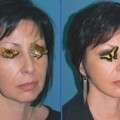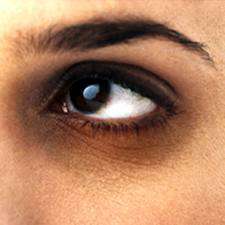FACELIFT

As people age, the effects of gravity, exposure to the sun, and the stresses of daily life can be seen in their faces. Deep creases from between the nose and mouth, the jawline grows slack and jowly, folds and fat deposits appear around the neck.
A facelift ( technically known as rhytidectomy) cant’ t stop this aging process. What it can do is ‘ set back the clock’ , improving the most visible signs of aging by removing excess fat, tightening underlying muscles, and redraping the skin of your face and neck. A facelift can be done alone, or in conjunction with other procedures such as a forehead lift, eyelid surgery, or nose reshaping.
If you’re considering a facelift, this brochure will give you a basic understanding of the procedure when it can help, how it’s performed, and what results you can expect. It can’t answer all of your questions, since a lot depends on the individual patient and the surgeon. Please ask your surgeon about anything you don’t understand.
The best candidates for a facelift
The best candidate for a facelift is a man or woman whose face and neck have begun to sag, but whose skin still haw some elasticity and whose bone structure is strong and well – defined. Most patients are in their forties to sixties, but facelifts can be done successfully on people in their seventies or eighties as well. Considering that they are in good general situation.
A facelift can make you look younker and fresher, and it may enhance your self – confidence in the process. But it can’t give you a totally different look, nor can it restore the health and vitality of your youth.
Planning your surgery
Facelifts are very individualized procedures. In your initial consultation doctor Ioannidis will evaluate your face, including the skin and underlying bone, and discuss your goals for the surgery.
Your surgeon should check for medical conditions that could cause problems during or after surgery, such as uncontrolled high blood pressure, blood clotting problems, or the tendency to form excessive scars. Be sure to tell your surgeon if you smoke or are taking any drugs or medications, especially aspirin or other drugs that affect clotting.
If you decide to have a facelift, doctor Ioannidis will explain the techniques and anesthesia he will use, the type of facility where the surgery will be performed, and the risk and costs involved. Don’t hesitate to ask him any questions you may have, especially those regarding your expectations and concerns about the results.
Where your surgery will be performed
A facelift may be performed in an out patient surgery center, or a hospital. It’s usually done on an outpatient basis, but some surgeons may hospitalize patients for a day when using general anesthesia. Certain conditions such as diabetes or high blood pressure should be monitored after surgery, and may also require a short inpatient stay.
Types of anesthesia
Most facelifts are performed under local anesthesia, combined with a sedative to make you drowsy. You’ll be awake but relaxed, and your face will be insensitive to pain. ( However, you may fell some tugging or occasional discomfort .) Some surgeons prefer a general anesthesia. In that case, you’ll sleep through the operation.
The surgery
A facelift usually takes several hours – or somewhat longer if you’re having more than one procedure done. For extensive procedures, some surgeons may schedule two separate sessions.
Incisions usually begin above the hairline at the temples, extend in a natural line in front of the ear ( or just inside the cartilage at the front of the ear ) , and continue behind the earlobe to the lower scalp. If the neck needs work, a small incision may also be made under the chin.
In general, the surgeon separates the skin from the fat and muscle below.
Ft may be trimmed or suctioned from around the neck and chin to improve the contour. The surgeons then tightens the underlying muscle and membrane, pulls the skin back, and removes the excess. Stitches secure the layers of tissue and close the incisions, metal clips may be used on the scalp.
Following surgery, a small, thin tube may be temporarily placed under the skin behind your ear to drain any blood that might collect there. The surgeon may also wrap your head loosely in bandages to minimize bruising and swelling.
After your surgery
There isn’t usually significant discomfort after surgery, if there is, it can be lessened with the pain medication prescribed by your surgeon. ( severe or persistent pain or a sudden swelling of your face should be reported to your surgeon immediately. ) Some numbness of the skin is quite normal, It will disappear in a few weeks or months.
Doctor Ioannidis may tell you to keep your head elevated and as still as possible for a couple of days after surgery, to keep the swelling down.
If you’ve had a drainage tube inserted, it will be removed one or two days after surgery. Bandages, when used, are usually removed after one to five days. Don’t be surprised at the pale, bruised, and puffy face you see. Just keep in mind that in a few days you’ll be looking normal.
Most of your stitches will be removed after about five days. Your scalp may take longer to heal, and the stitches or metal clips in your hairline could be left in a few days longer.
Getting back to normal
You should be up and about in a day or two, but plan no taking it easy for the first week after surgery. Be especially gentle with your face and hair, since your skin will be both tender and numb, and may not respond normally at first.
For the first week you should avoid strenuous activity including sex, heavy house work, for at least two weeks avoid alcohol, steam baths and saunas for a month.
At the beginning, your face may look and feel rather strange. Your features may be distorted from the swelling, your facial movements may be slightly stiff and you’ll probably be self – conscious about the scars.
Some bruising may persist for two or three weeks, and you may tire easily.
It’s not surprising that some patients are disappointed and depressed at first.
By the third week, you’ll look and feel much better. Most patients are back at work about 5 – 7 days to two weeks after surgery. If you need it, special camouflage make up can mask most bruising that remains. This depends of how much of operation has been done ( eyelid, facelift, forhead lift e.t.c. ).
Your new look
The chances are excellent that you’ll be happy with your facelift – especially if you realize that the results may not be immediately apparent.
Even after the swelling and bruises are gone, the hair around your temples may be thin and your skin may feel dry and rough for several months.
You’ll have some scars from your facelift, but in case they’ll fade within time and should be scarcely visible and will be hidden by hair and natural creases.
Please do not hesitate to contact with us and close an appointment with Dr. Ioannidis.







